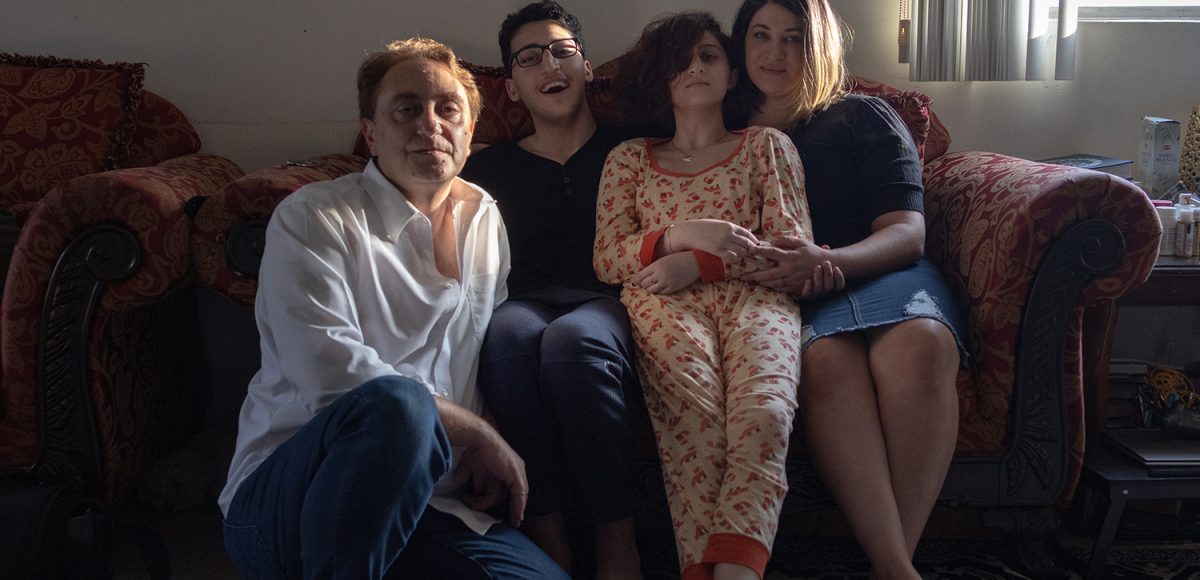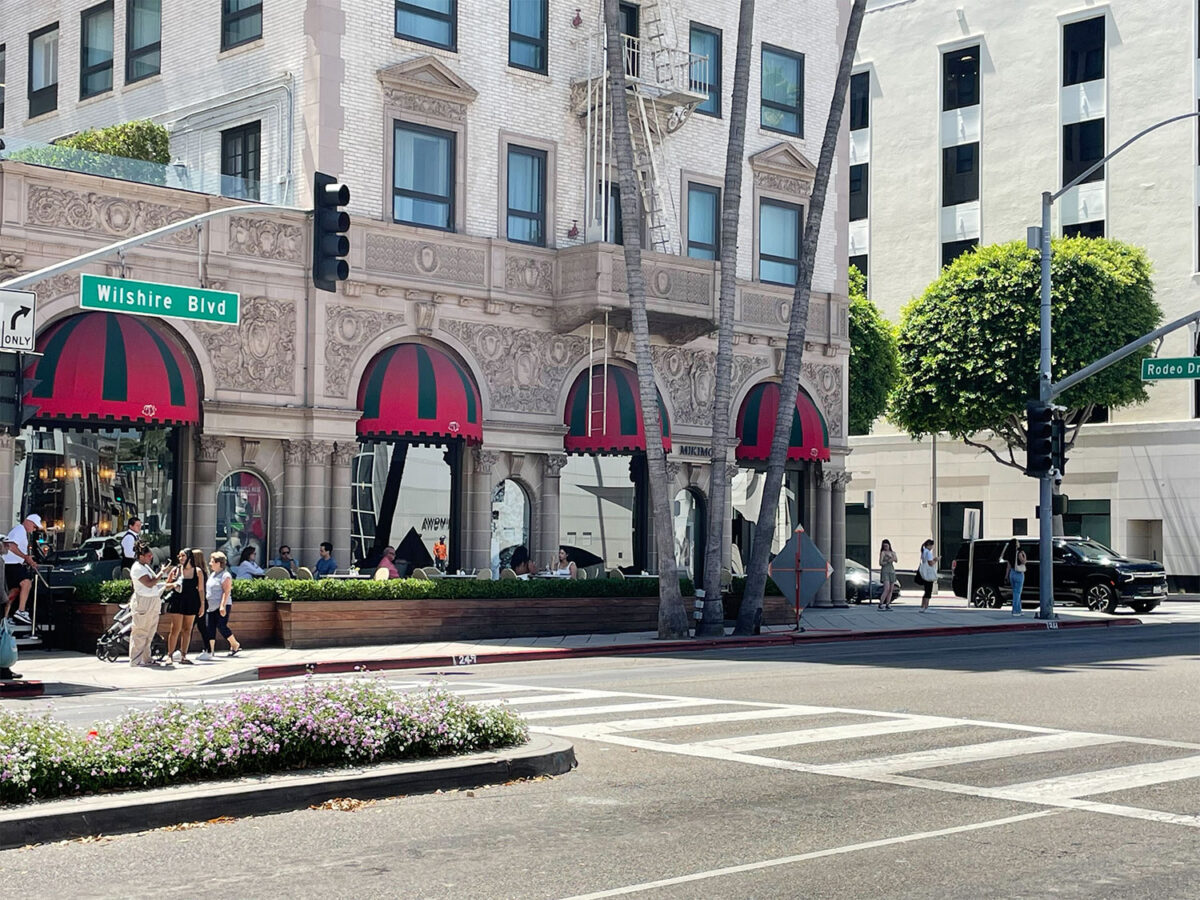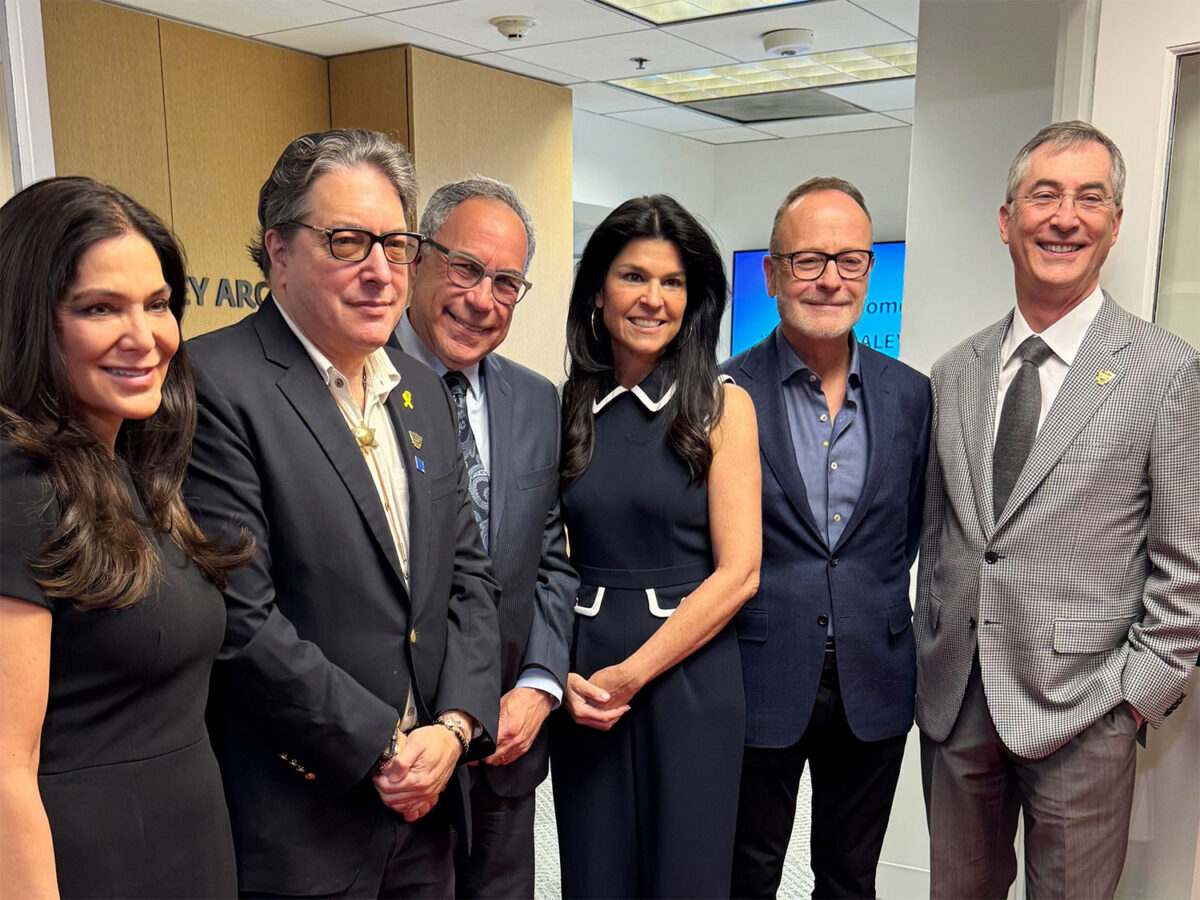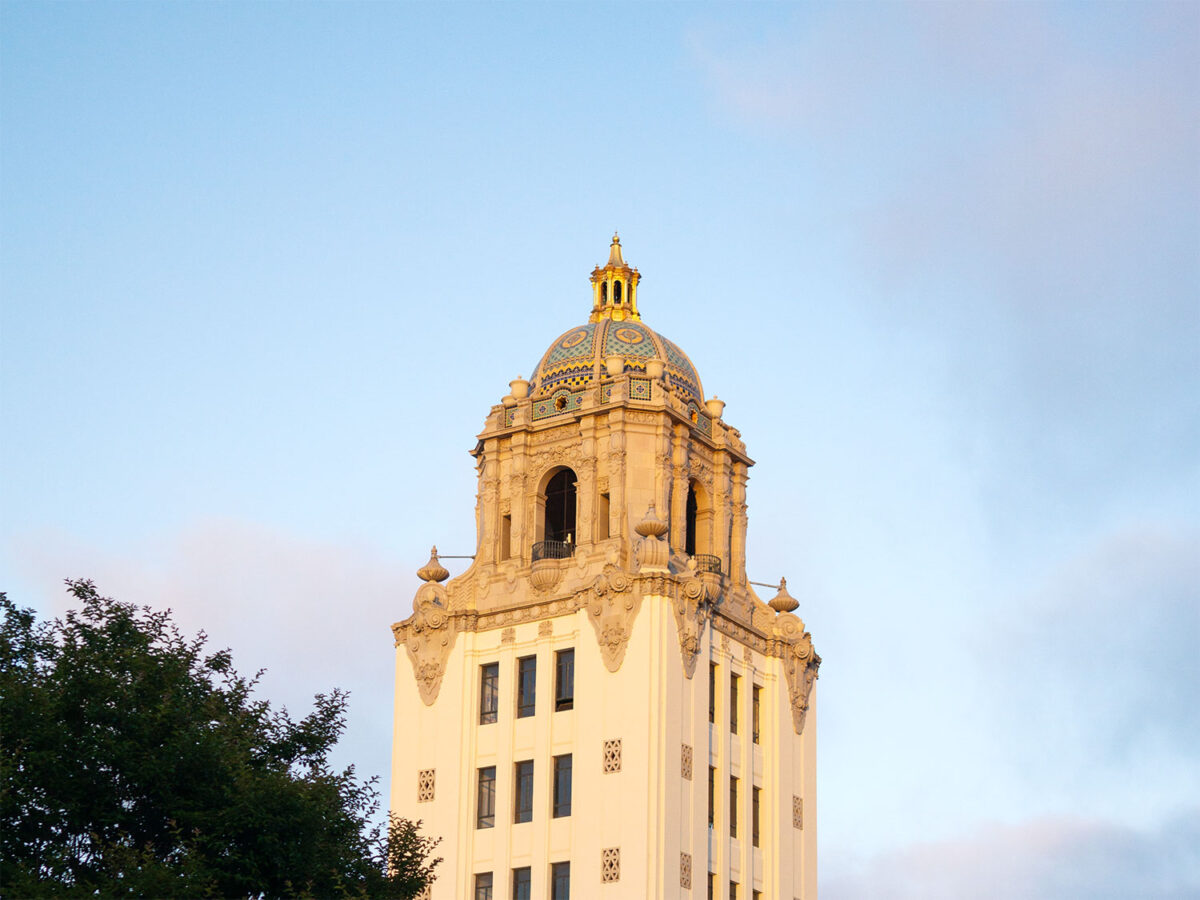The first sign of trouble came when Yonatan Golian, an otherwise healthy 12-year-old boy, fell to his living room floor in an epileptic fit. Two years later, after Yonatan had begun treatment for epilepsy, the unthinkable happened; his younger sister, Revital had her first seizure. Faced with the improbability that two siblings both had epilepsy, doctors administered genetic tests and identified the culprit: Lafora disease, a rare and terminal genetic illness.
Daryoosh Golian Moghaddam and his wife Gladi Gidanian had never heard of Lafora disease until their children’s diagnosis. The genetic disease occurs at a rate of one in a million, mostly in the Mediterranean and the Middle East. Lafora presents as a combination of Alzeihmer’s, Parkinson’s, and epilepsy beginning in early adolescence. Affected individuals typically live for 10 years after showing symptoms.
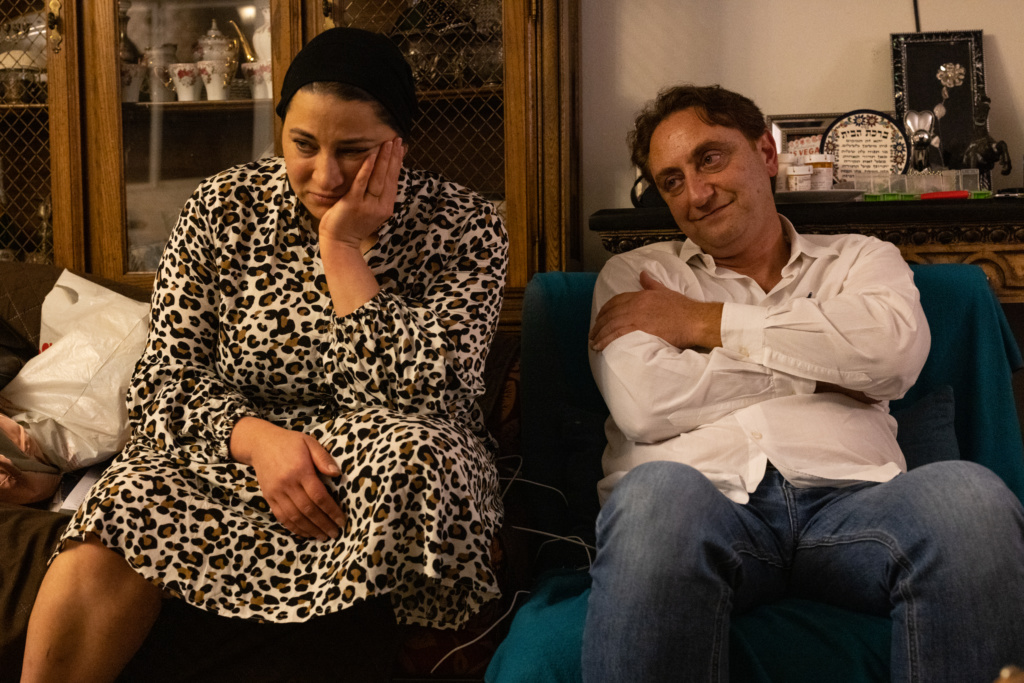
Gladi and Daryoosh, who are Jewish, brought their family to the United States from Iran 10 years ago in pursuit of “the American Dream.” Gladi remembers her childhood in Iran fondly, but like Daryoosh, she worried about her children growing up as second-class citizens in the Muslim-majority country. “We had to wear uniforms and scarves, we had to go to school on Shabbat, and as a Jew, you can’t get certain degrees,” she said.
While the family could have afforded to buy a house in Glendale or possibly Encino, the four of them landed in a two-bedroom apartment in Beverly Hills for one reason: “Good schools,” Daryoosh said.
Before the daily regimen of pills, before the seizures, before Lafora, “everything was good,” Gladi said. “The kids were blooming,” Gladi recalled. “In just a span of six months, they were talking [English] like their mother language.”
Now, Yonatan can barely walk on his own and speaks only a handful of words each day. Revital went without a seizure for nearly two years and seemed relatively unaffected until recently. But within just the last 30 days, she went from speaking full sentences with ease to stumbling over her words, growing frustrated when she cannot find words that she knew the day before.
The process is unbearable, and yet, as Gladi told the Courier, she and Daryoosh have had no choice but to bear it. Lacking both money and time, the Golians have pinned their hopes to an expensive experimental treatment that may give the children a chance at survival. And with a massive outpouring of support from the community, they may be able to afford it in time.
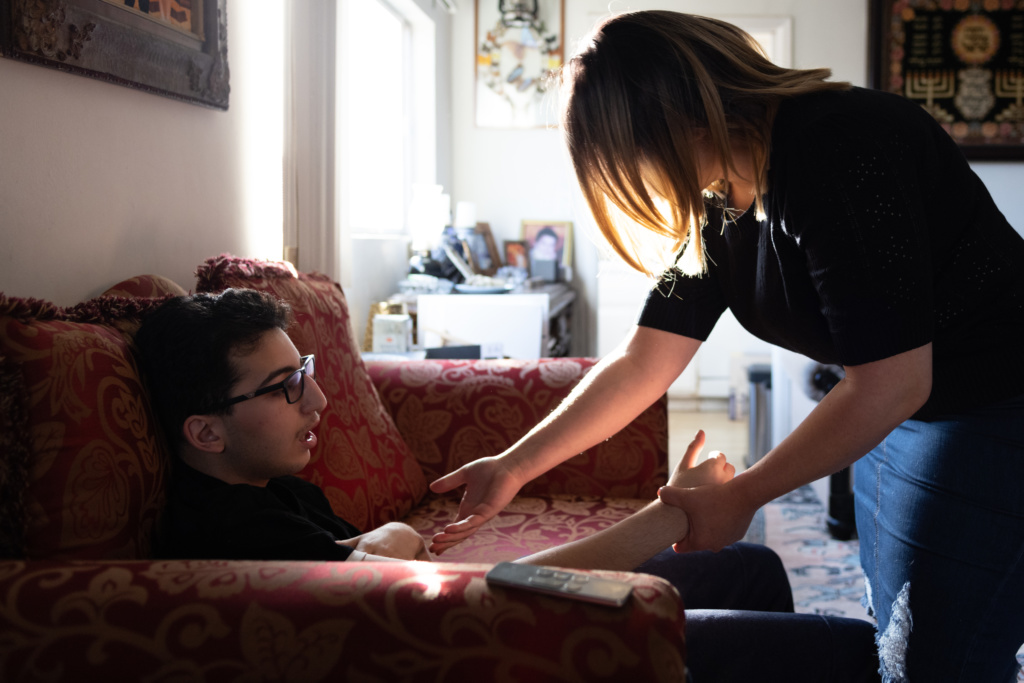
Multiple possible treatments for Lafora are in various stages of development, says Dr. Matthew Gentry, a professor at the University of Kentucky. Gentry, who is in contact with the Golians, is at the forefront of an international search for a treatment as Director of the Lafora Epilepsy Cure Initiative. Gentry could not comment specifically on the Golians, citing confidentiality, but he spoke broadly about the recent advancements made in the field.
“When I got in, I could never envision a therapy. In the last five years, we’ve made outstanding progress,” Gentry told the Courier.
Gentry added, “Now it feels like we’re stalled a little bit in terms of getting into the clinic.”
The pandemic derailed and delayed promising Lafora therapies, Gentry said. For a disease as aggressive as Lafora, Yonatan and Revital may not have time to wait for clinical trials to begin. But under federal law, pathways do exist for patients with life-threatening diseases to gain access to experimental treatments outside of the context of a clinical study. There’s a catch, though: the patient must pay for the cost of making the drug available and administering it.
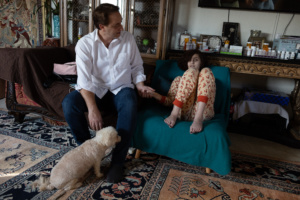
According to Daryoosh, the price tag for the experimental treatment comes out to around $1 million. That doesn’t include the second round of treatment that would be necessary to make any gains permanent by either changing or silencing the mutated genes, which he said would add at least another million to the total.
“I will do everything to save them. Even if I have to, I will sell my organs,” he said.
Daryoosh has spent the last several months going from synagogue to synagogue, starting with his own local temple, Nessah, sharing his children’s story and asking for donations. He set up a table with information about his children at a recent Cyrus the Great Day celebration in West L.A., where hundreds of members of the Iranian diaspora celebrated the first Persian emperor.
He was recently put in touch with the Hope Foundation, a nonprofit that primarily assists Iranian Jewish immigrants in need of assistance. The Hope Foundation, in turn, has spread the word even further.
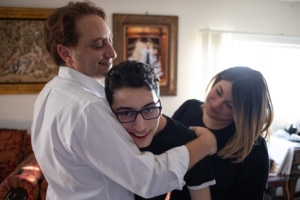
The results have been overwhelming. The family raised nearly $500,000 in just about two months. The community has rallied around them in a way that has surprised and heartened Nazy Nazarian, a special advisor with the Hope Foundation.
“I started with WhatsApp and calling and emailing and it just became viral. In the blink of an eye, everybody knew about them,” she told the Courier. “Everyone wants to do something, everybody wants to help.”
“I never thought we would get this much help and love and support,” Gladi said, noting that both her and Daryoosh’s family almost all live in Iran. “God heard us the nights that we cried and said, ‘Oh, God help us. We are so alone.’ He heard us. We are not alone.”
Those interested in helping the family can donate to their GoFundMe (https://www.gofundme.com/f/saving-the-life-of-two-teenage-siblings) or can contact the Hope Foundation at 424-234-0588.



